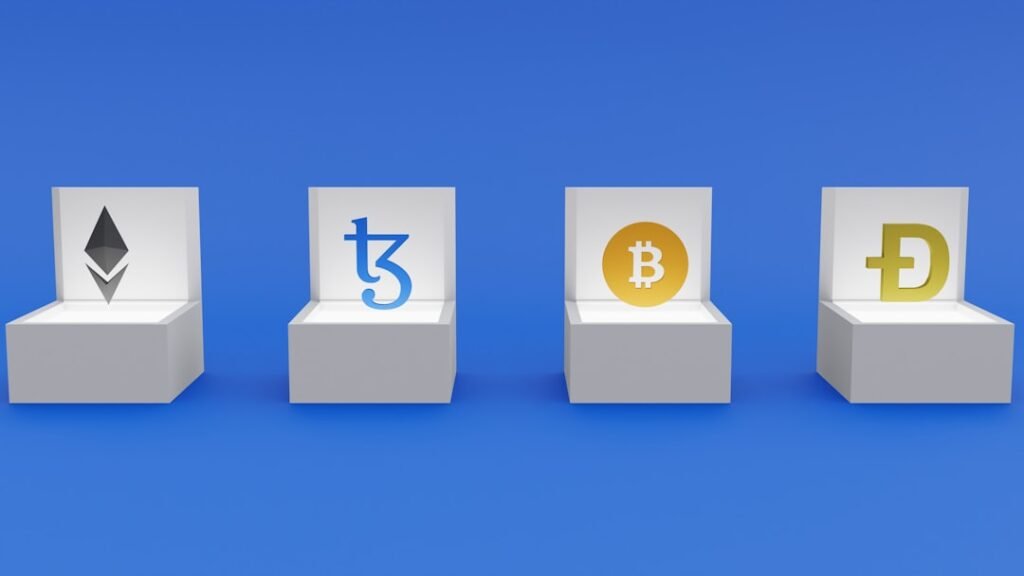The Metaverse: Is This Truly the Next Evolution of the Internet?
The concept of the metaverse has ignited imaginations and investments, hailed by proponents as the inevitable next iteration of the internet. It promises a persistent, collective, shared 3D virtual space where digital avatars seamlessly traverse experiences, carrying identities and assets. Yet, amidst soaring predictions and significant financial bets, the path to this immersive future remains complex, marked by technological hurdles, shifting definitions, and a reality check after initial hype.
Defining the Elusive Metaverse
At its core, the metaverse envisions the convergence of physical and virtual space, accessed via computers and enabled by immersive technologies like Virtual Reality (VR), Augmented Reality (AR), and Mixed Reality (MR). Author Matthew Ball, in his primer "The Metaverse: And How It Will Revolutionize Everything," defines it as: "A massively scaled and interoperable network of real-time rendered 3D virtual worlds that can be experienced synchronously and persistently by an effectively unlimited number of users with an individual sense of presence and with continuity of data, such as identity, history, entitlements, objects, communications and payments."
Crucially, this fully realized, unified version largely remains unbuilt. Competing visions exist: will it be an open, deeply interoperable platform, or a multiverse of independent, walled-off worlds sharing minimal data? Lauren Lubetsky of Bain & Company outlined three plausible scenarios still relevant today:
- Niche Applications: Primarily for consumer entertainment and gaming, falling short of an all-encompassing virtual reality.
- Competing Ecosystems: Controlled by large players (e.g., Apple vs. Android meta-worlds) with limited interoperability.
- Dynamic & Open: An interoperable space akin to today's internet, but rendered in 3D.
A Historical Perspective: From Sci-Fi to Sensorama
Visions of parallel digital universes predate the modern internet. The term "metaverse" itself was coined by Neal Stephenson in his 1992 sci-fi novel Snow Crash, describing a virtual world where avatar skill determined status. Ernest Cline's Ready Player One further popularized the concept. However, the foundational technologies stretch back decades:
- 1960s: Morton Heilig's Sensorama offered an early immersive multimedia experience. Ivan Sutherland's Sketchpad laid groundwork for modern computer graphics.
- 1980s: Jaron Lanier pioneered early commercial VR headsets and data gloves.
- Late 1980s/Early 1990s: Tim Berners-Lee invented the World Wide Web, enabling linked information access.
- Late 1990s/Early 2000s: Massively Multiplayer Online Role-Playing Games (MMORPGs) demonstrated large-scale virtual worlds. Philip Rosedale's Second Life launched as a user-created virtual platform.
- 2010s: VR resurgence led by Oculus VR (now Meta Reality Labs), Sony, Google, Unity, and Epic Games.
- 2009/2015: Satoshi Nakamoto created Bitcoin and blockchain. Vitalik Buterin and Gavin Wood launched Ethereum, enabling smart contracts, decentralized apps, and NFTs – crucial for virtual economies.
The Hype Cycle: Boom, Bust, and Pivot
The concept gained unprecedented traction in 2021. Fueled by pandemic-driven remote work/socializing, advances in AI, online gaming growth, and hefty industry investment, the metaverse seemed imminent. Facebook's rebranding to Meta and a $10 billion investment announcement acted as a massive catalyst, with figures like Bill Gates predicting metaverse meetings within 2-3 years.
However, the bubble burst in late 2022. As ChatGPT captured global attention, metaverse enthusiasm waned sharply. Meta's Reality Labs division recorded staggering losses: $13.7 billion in 2022 and $16.1 billion in 2023. Microsoft laid off employees from Mixed Reality teams, cryptocurrency markets collapsed, Disney shuttered its metaverse division, and consumers showed little appetite for extended reality devices post-lockdown. Media declarations of the metaverse's "death" proliferated. Backlash against overmarketing even led to industry repudiation of the term itself, exemplified by Apple launching its Vision Pro headset in 2024 under the banner of "spatial computing."
Why the Metaverse Still Matters for Business
Despite the hype slowdown, the metaverse is not dead. Core components are gaining traction as graphics, capabilities, and AI rapidly improve. Technologies like eye tracking promise more engaging visual experiences. The focus has shifted towards tangible, practical applications, particularly in the Industrial Metaverse.
- Digital Twins & Design: Platforms like Nvidia Omniverse enable companies to create highly accurate digital twins of factories, products, supply chains, and even entire cities (e.g., Nvidia's Earth-2 for climate modeling). This allows for sophisticated simulation, monitoring, and optimization before physical implementation.
- Training & Upskilling: VR is revolutionizing employee training, especially in high-risk or complex fields (surgery, emergency response, assembly lines, warehousing). Companies like Walmart, SAP, Delta, and Children’s Hospital Colorado utilize VR/AR for immersive, safe, and effective skill development, reducing errors and improving outcomes. PwC research found VR soft skills training completed up to 4x faster than classroom sessions, with participants 275% more confident in their skills.
- Augmented Workflows: AR overlays critical information onto real-world objects (e.g., schematics for technicians, inventory data for warehouse staff), enhancing productivity and accuracy.
- Commerce & Customer Engagement: McKinsey predicts metaverse commerce (spanning home, food, fitness, apparel) could drive $5 trillion in value creation by 2030. Customers seek virtual products tied to the physical world. Statista projects the metaverse market to reach $507.8 billion by 2030 with over 2.6 billion users, growing at 38% annually from $74.4 billion in 2024. Marketing and customer engagement are seen as key entry points, with 79% of executives in a Protiviti-Oxford survey planning metaverse strategies for this purpose.
Accessing the Metaverse: VR, AR, and Beyond
VR and AR are considered critical gateways:
- VR: Simulates a 3D environment, typically accessed via headsets (and increasingly haptic suits/gloves), aiming to approximate reality through senses. It offers deep immersion but often isolates users from their physical surroundings.
- AR: Adds digital overlays onto the real world (e.g., Pokémon Go, Google Glass, car HUDs), allowing interaction with the physical environment. It's less immersive but more integrated into daily life.
However, many current "metaverse-like" experiences (Roblox, Decentraland, Minecraft) are accessible via browsers or mobile devices with a fast internet connection, not requiring dedicated VR/AR hardware. Experts like Louis Rosenberg predict AR, blending digital layers seamlessly with the real world, might ultimately become the primary interface, potentially replacing mobile phones as our main digital gateway by 2035.
Key Technologies Powering the Vision
Beyond VR/AR, several converging technologies underpin metaverse development:
- Artificial Intelligence (AI): Crucial for creating realistic environments, intelligent NPCs (Non-Player Characters), personalization, content generation, and data analysis.
- Internet of Things (IoT): Connects physical objects to the digital world, feeding real-time data into digital twins and enabling interaction.
- Extended Reality (XR): Encompasses VR, AR, and MR.
- Brain-Computer Interfaces (BCIs): (Emerging) Potential for more direct neural control and interaction.
- 3D Modeling & Reconstruction: Essential for building virtual worlds and objects.
- Spatial & Edge Computing: Processes data closer to the user for low-latency, realistic interactions in real-time.
- Blockchain: Provides the infrastructure for decentralized ownership (NFTs), secure transactions (cryptocurrencies), and trustless systems (smart contracts, DAOs).
Metaverse vs. Web 3.0: Distinct but Intertwined
While often conflated, the metaverse and Web 3.0 are distinct concepts:
- Web 3.0 (Web3): Focuses on a decentralized internet vision characterized by blockchain integration, interoperability, digital ownership, and user control, moving away from centralized platforms.
- The Metaverse: Aims to be a fully immersive, interconnected digital universe for real-time interaction. It relies on many Web 3.0 tenets (decentralization, blockchain, user control) and technologies, positioning itself as a key experiential layer within the future Web 3.0 landscape.
Major Players Shaping the Landscape
Corporate strategies fluctuate with the economy and tech trends (like generative AI), but key players include:
- Apple: Betting on "spatial computing" with the high-end Vision Pro headset, focusing on blending digital and real worlds.
- AWS: Providing foundational cloud, AI, and blockchain services powering many XR and metaverse platforms.
- Epic Games: Creator of Unreal Engine and Fortnite, partnering with Disney to build a "persistent universe" for games and entertainment.
- Google: Leveraging expertise in AR/VR, AI, cloud, and content creation (e.g., Project Starline).
- Meta: Despite massive Reality Labs losses, continues investing in Horizon Worlds/Workrooms, while increasingly framing the metaverse as a blend of physical/digital and emphasizing AI.
- Microsoft: Integrating metaverse concepts via Mesh (immersive workplace), HoloLens, Azure cloud services, and Xbox Cloud Gaming, though industrial metaverse efforts faced setbacks.
- Nvidia: Omniverse platform is a cornerstone for industrial metaverse applications, enabling complex digital twin creation and 3D collaboration.
The Future: Utopian Dream or Dystopian Nightmare?
Predictions are polarized. Optimists see enriched lives: unprecedented access to experiences (education, travel, arts), enhanced collaboration, democratized opportunities, and solutions to real-world problems like hybrid work isolation. A Pew Research/Elon University canvass found 54% of experts believe a refined, functional metaverse will be part of daily life for 500 million+ people by 2040.
Pessimists warn of magnified existing digital ills: intensified disinformation, addiction, surveillance capitalism, privacy erosion, social fragmentation, new forms of harassment/violence, and digital divides. They fear "slavery models" via proprietary digital twins or "silicon prisons" controlled by opaque algorithms. Ethical concerns abound, particularly regarding the potential for XR technologies to monitor subconscious reactions and mental models. The remaining 46% of experts in the Pew canvass doubted widespread adoption of a fully immersive VR-centric metaverse by 2040.
Preparing Businesses for an Uncertain Future
Businesses exploring the metaverse must move beyond simple translations of physical spaces into virtual ones, which can reduce productivity and cause issues like VR motion sickness. Key considerations include:
- User Experience (UX): Prioritize intuitive design, comfort, and minimize effects like the "screen door effect" (mesh appearance in headsets).
- Talent: Hire and train specialists in 3D modeling, XR development, digital twins, and IoT integration.
- Strategy: Focus on specific, valuable use cases (training, design collaboration, virtual prototyping, customer engagement) rather than vague metaverse ambitions.
- Workforce Impact: Acknowledge potential job displacement and invest in reskilling.
- Security & Privacy: Proactively address significant cybersecurity threats and complex privacy challenges (data rights, GDPR application, minor protection, user-to-user privacy). Develop tailored policies and advocate for industry-wide safeguards.
- Ethics: Establish clear guidelines for ethical use, especially concerning data collection and potential manipulation.
The Road Ahead: Evolution, Not Revolution
The vision of a single, unified metaverse where humans primarily live, work, and socialize via VR headsets by the mid-2020s proved premature. However, dismissing the concept entirely ignores the tangible progress and value emerging in specific domains, particularly the industrial metaverse, training, and augmented workflows. The metaverse's future is likely one of gradual evolution, not sudden revolution. It will manifest as a spectrum of experiences – from practical AR overlays enhancing daily tasks to immersive VR simulations and persistent virtual worlds – built on advancements in AI, graphics, connectivity, and interoperability standards.
Whether it becomes a transformative force for good, a magnifier of societal problems, or (most likely) a complex mix of both, hinges on deliberate choices made today regarding technology development, regulation, ethical frameworks, and equitable access. The "metaverse," in whatever form it ultimately takes, represents the next significant chapter in humanity's ongoing digital journey, promising to reshape how we interact, learn, work, and experience reality itself.












